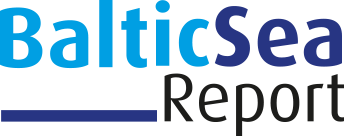The recently updated HELCOM State of the Baltic Sea report is now publicly available, providing a complete insight about the ecological state of the Baltic Sea and the pressures affecting it. Overall, despite improvements, the sea is not yet in a good state, with eutrophication causing the major stress.
Approved by all HELCOM member countries, the report is based on verified scientific evidence stemming from a recently concluded HELCOM assessment – the HELCOM Second Holistic Assessment of the Ecosystem Health of the Baltic Sea, or HOLAS II. It is the most comprehensive baseline currently available on the Baltic Sea.
“The report holds a wealth of information about the ecological state of the Baltic Sea and the pressures affecting it, making it an important knowledge and decision-making tool for environmental policy makers, researchers and Baltic Sea stakeholders such as industries and businesses,” said Lena Bergström, the HELCOM HOLAS II Project Coordinator who led the publication of the report.
For the first time, economic and social analyses (ESA) and the evaluation of cumulative impacts have also been included in the assessment, to help quantifying the benefits we get from the sea and the economic losses due to inadequate ecological status.
“We gain a lot from the Baltic Sea: food, jobs, recreational activities among others. But the report also shows that our actions have a big impact on the ecological state of the sea,” said Bergström, further stressing on the correlation of healthy Baltic Sea resources and human welfare.
According to the report, improvements are seen in the reduction of inputs of nutrients and hazardous substances into the Baltic Sea. The progress made so far shows that concerted Baltic Sea regional collaboration leads to tangible results.
However, the ecological objectives set by the Baltic Sea Action Plan seeking to attain a healthy Baltic Sea by 2021 have not yet been attained.
The major pressure on the Baltic Sea remains eutrophication, affecting 97 percent of the waterbody. The current total losses attributed to eutrophication – excessive growth of algae that upsets the sea’s ecosystem – are estimated to be in the range of EUR 3.8 to 4.4 billion annually for the region.
Plastic pollution – especially from microplastics –, pharmaceutical residues, underwater noise and effects from climate change are some of the current additional pressures.
The report also finds that the Baltic Sea’s biodiversity is not in a good state. Fish stocks, marine habitats and mammals such as the harbour porpoise and the ringed seal are particularly affected.
More actions are needed to improve the Baltic Sea’s environmental status. “It is very clear what needs to be done,” stated Maria Laamanen from the Finnish Ministry of the Environment and who chaired the HOLAS II Core Team, the international HELCOM group preparing the report. “We need to work on implementing the Baltic Sea Action Plan and the further actions that have been agreed upon in the HELCOM ministerial meetings.”
The Baltic Sea Action Plan (BSAP) is the region’s strategic tool to attain a healthy Baltic Sea by 2021, focussing primarily on eutrophication, hazardous substances, biodiversity and maritime activities.
Essentially based on the findings of the report, efforts are currently underway to update the BSAP beyond its due date in 2021.
Go to the report: http://stateofthebalticsea.helcom.fi

 Deutsch
Deutsch




Leave a Reply